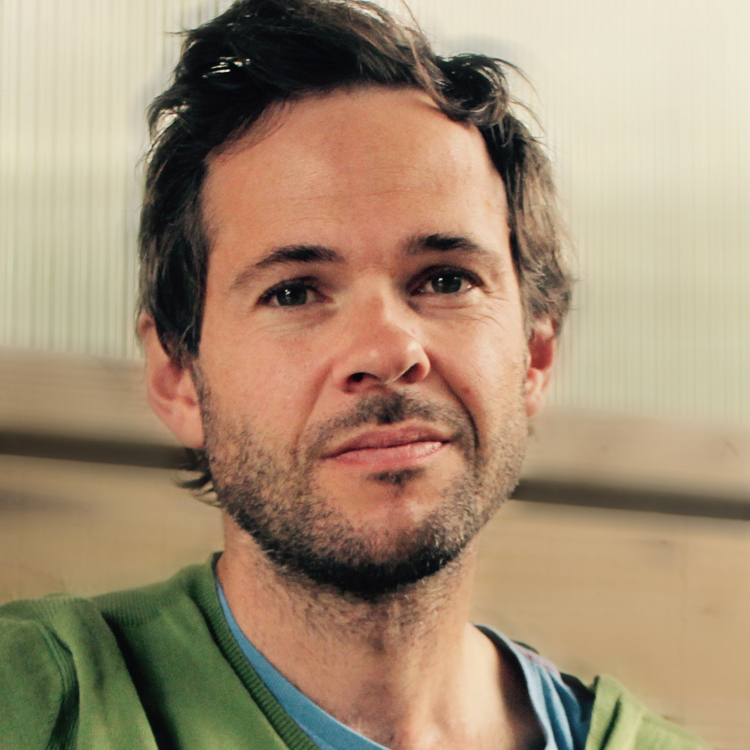New Artists, Old Songs: Introducing
Will Cookson, Robert Nottingham, Daphne Willis, Good Harvest & more!
We’ve been in hiding for a few weeks while the school year kicks in, calibrating against the winds of change as they rail against the tide. What better time to feature the new sounds of the season? Read on for coverage of Sufjan Stevens, Fleetwood Mac, Johnny Cash, The 1975, The Beatles, Joni Mitchell and more from a set of emerging artists and newfound discoveries well worth a second listen.
 We start today with a bit of pianissimo whisperfolk with tense undertones and swells from Bristol-bred alt-folk songwriter Will Cookson, who made us cry with his take on this Sufjan Stevens cover. Cookston’s newest album Ghosts of the Morning Sun will hit the skids in October. Feature track Worthing Beach is intimate and epic, with sweeping arrangement, wistful voice and an aching heart; we’re happy to have it, and eager for more.
We start today with a bit of pianissimo whisperfolk with tense undertones and swells from Bristol-bred alt-folk songwriter Will Cookson, who made us cry with his take on this Sufjan Stevens cover. Cookston’s newest album Ghosts of the Morning Sun will hit the skids in October. Feature track Worthing Beach is intimate and epic, with sweeping arrangement, wistful voice and an aching heart; we’re happy to have it, and eager for more.
- Will Cookson: Death With Dignity (orig. Sufjan Stevens) [2016]
 Like a fragile field recording, this amateur Bandcamp find – a secondhand cover, built by stripping down Halsey’s dreamy indie electropop b-side – lingers in the psyche, a haunting heartmurmur heard long after the last gently plucked note fades. Kudos to Bostonian singer-songwriter Maryam Raad, about whom we can find no more but this and a single single; if and when that changes, we’ll let you know.
Like a fragile field recording, this amateur Bandcamp find – a secondhand cover, built by stripping down Halsey’s dreamy indie electropop b-side – lingers in the psyche, a haunting heartmurmur heard long after the last gently plucked note fades. Kudos to Bostonian singer-songwriter Maryam Raad, about whom we can find no more but this and a single single; if and when that changes, we’ll let you know.
- Maryam Raad: I Walk The Line (orig. Johnny Cash) [2016]
 And now for something completely different: a refreshing acoustic-swing jazzfunk rock take on a familiar Fleetwood Mac classic from husband and wife duo The Symbols, exclusively released here on Cover Lay Down. Equal parts Django and Hendrix, the track is a delight, with powerhouse pop in the throat and an audible grin on the lips of lead singer Mer Sal making for the perfect compliment to cymbal-crashing percussion, backup singer oohs, and Grammy-nominated hubby Jasco’s string-bending wizardry.
And now for something completely different: a refreshing acoustic-swing jazzfunk rock take on a familiar Fleetwood Mac classic from husband and wife duo The Symbols, exclusively released here on Cover Lay Down. Equal parts Django and Hendrix, the track is a delight, with powerhouse pop in the throat and an audible grin on the lips of lead singer Mer Sal making for the perfect compliment to cymbal-crashing percussion, backup singer oohs, and Grammy-nominated hubby Jasco’s string-bending wizardry.
- The Symbols: Gold Dust Woman (orig. Fleetwood Mac) [2016]
 A little pop, precisely done; a little jazz in the slippery tone, and more than a little soul have us falling in love with Daphne Willis, whose summer release Come Together takes on five Beatles songs in a set that gently combines the best of Stevie Wonder, Mazzy Star, and Imagine Dragons without losing a whit of authenticity. Willis hails from Nashville, but there’s Chicago in her history and sound, too; with a voice like that, odds are she’ll be from everywhere soon.
A little pop, precisely done; a little jazz in the slippery tone, and more than a little soul have us falling in love with Daphne Willis, whose summer release Come Together takes on five Beatles songs in a set that gently combines the best of Stevie Wonder, Mazzy Star, and Imagine Dragons without losing a whit of authenticity. Willis hails from Nashville, but there’s Chicago in her history and sound, too; with a voice like that, odds are she’ll be from everywhere soon.
- Daphne Willis: Something (orig. The Beatles) [2016]
 It’s over a year old, but a failed attempt at focusing a coverlook lens on the songbook of The 1975 leaves us nonetheless with this dear, raw, gently poppy track from Manchester singer-songwriter Robert Nottingham – a standout radiopop reminiscence translated into the solo, pensive mold. We’re having trouble putting this one down, and you will, too; head on over to his pages on Bandcamp and YouTube for more than forty more great coversongs performed live and at home.
It’s over a year old, but a failed attempt at focusing a coverlook lens on the songbook of The 1975 leaves us nonetheless with this dear, raw, gently poppy track from Manchester singer-songwriter Robert Nottingham – a standout radiopop reminiscence translated into the solo, pensive mold. We’re having trouble putting this one down, and you will, too; head on over to his pages on Bandcamp and YouTube for more than forty more great coversongs performed live and at home.
- Robert Nottingham: Somebody Else (orig. The 1975) [2015]
 LA-based producer/vocalist duo OKKO‘s brand new world-beat cover of Heartbeats, originally by The Knife and famously transformed for the folkworld by indie transformationalist Jose Gonzalez, turns the secondhand into contemporary gold with sitar, synths, and eastern percussion, making the track, the first in an intended series of Indian and Yoga-inspired transformations of popular song from a duo whose previous work includes “cowrites with Cyndi Lauper, singing on Britney Spears tracks, and pop releases in Sweden,” an auspicious harbinger of what may come as they take on Nirvana, MGMT, and more.
LA-based producer/vocalist duo OKKO‘s brand new world-beat cover of Heartbeats, originally by The Knife and famously transformed for the folkworld by indie transformationalist Jose Gonzalez, turns the secondhand into contemporary gold with sitar, synths, and eastern percussion, making the track, the first in an intended series of Indian and Yoga-inspired transformations of popular song from a duo whose previous work includes “cowrites with Cyndi Lauper, singing on Britney Spears tracks, and pop releases in Sweden,” an auspicious harbinger of what may come as they take on Nirvana, MGMT, and more.
- OKKO: Heartbeats (orig. The Knife) [2016]
Like the tight, aching harmonies of First Aid Kit, but prefer your Swedish vocal harmonies a little less sharp? Then it’s time to try this gorgeous new version of Joni Mitchell’s Woodstock, which belongs in the pantheon right alongside Darlingside and Heather Maloney and Crosby, Stills, Nash and Young: crisp, clear, and tight as an indian drum; sort, soaring, smooth and pure as springwater, lovingly presented in its native video form as the artists intended, and with a Coldplay cover from the same barn session as a bonus. Kudos to harmony-and-guitar duo Good Harvest for a perfect pairing of song and singers – we’ll see at least one of these songs again in our best of 2016, for sure.
Always ad-free and artist-centered, Cover Lay Down has been exploring the modern folkways through coverage since 2007 thanks to supporters like you. Coming soon: our annual Fall fund drive, plus new and newfound tribute albums and cover compilations, artist features, and more!

 Flash forward a decade, and here we are: one among a million paying tribute to the day the towers slowly fell. The world is faster, now, and more divided – two trends which spin into each other like two sides of a gyroscope, pulling at our psyches. I commute 40 minutes every morning to work with students for whom disaster is always personal and everpresent: homelessness, street violence, unemployment, the looming promise of dead-end futures. Some days it seems the only thing they own is their image, and who can fault them, then, for being so brash and sassy, peacocks with razor talons, angry at the world and taking it out on themselves without even realizing it.
Flash forward a decade, and here we are: one among a million paying tribute to the day the towers slowly fell. The world is faster, now, and more divided – two trends which spin into each other like two sides of a gyroscope, pulling at our psyches. I commute 40 minutes every morning to work with students for whom disaster is always personal and everpresent: homelessness, street violence, unemployment, the looming promise of dead-end futures. Some days it seems the only thing they own is their image, and who can fault them, then, for being so brash and sassy, peacocks with razor talons, angry at the world and taking it out on themselves without even realizing it.  It’s been seven years, now, since I left the prep school; seven years since we lived side by side with the kids in the dormitories, and shared the pain and joys, the proms and punishments of night and day with the smart and well-bred, the resourced and the right-raised. But I often think of that day when I’m in my inner city classroom, working with the children of the downtrodden, the recent immigrants who don’t speak English, the hopeless – all categories of children whose pain is everpresent and real, and who would never have sat in silence, or even identified with the children of the towers.
It’s been seven years, now, since I left the prep school; seven years since we lived side by side with the kids in the dormitories, and shared the pain and joys, the proms and punishments of night and day with the smart and well-bred, the resourced and the right-raised. But I often think of that day when I’m in my inner city classroom, working with the children of the downtrodden, the recent immigrants who don’t speak English, the hopeless – all categories of children whose pain is everpresent and real, and who would never have sat in silence, or even identified with the children of the towers. 